NASA’s Europa Clipper spacecraft launched from Kennedy Space Center in Florida on Monday, Oct. 14. The Europa Clipper mission will conduct a detailed investigation of Jupiter’s moon Europa to determine whether there are places below its icy surface that could…
Tag: Planetary Science
New findings point to an Earth-like environment on ancient Mars
A research team using the ChemCam instrument onboard NASA’s Curiosity rover discovered higher-than-usual amounts of manganese in lakebed rocks within Gale Crater on Mars, which indicates that the sediments were formed in a river, delta, or near the shoreline of an ancient lake. The results were published today in Journal of Geophysical Research: Planets.
WashU experts in path of totality (southern Missouri) available for eclipse day interviews
Planetary sciences faculty experts and students from Washington University in St. Louis will view the solar eclipse from a site that will experience 4 minutes of totality, starting at 1:57 p.m. Central time on Monday, April 8, 2024. At the…
Revealing Nature’s Secrets from Space: Satellite Data Unlocks Drought’s Impact on Southwest China’s Carbon Cycle
A new study reveals a significant increase in aboveground carbon (AGC) in Southwest China from 2013 to 2021, defying the adverse effects of extreme droughts. This achievement underscores the region’s pivotal role as a carbon sink, attributed to extensive ecological projects and innovative remote sensing techniques.
With NASA support, device for future lunar mission being developed at WashU
Scientists at Washington University in St. Louis are developing a prototype for an instrument for a future Moon mission with support from a nearly $3 million grant from NASA.
The remains of an ancient planet lie deep within Earth
In the 1980s, geophysicists made a startling discovery: two continent-sized blobs of unusual material were found deep near the center of the Earth, one beneath the African continent and one beneath the Pacific Ocean.
Giant planets cast a deadly pall
Giant gas planets can be agents of chaos, ensuring nothing lives on their Earth-like neighbors around other stars.
Department of Energy Announces $28.5 Million for LaserNetUS
Today, the Department of Energy’s Office of Science announced $28.5 million for LaserNetUS to advance discovery science and inertial fusion energy.
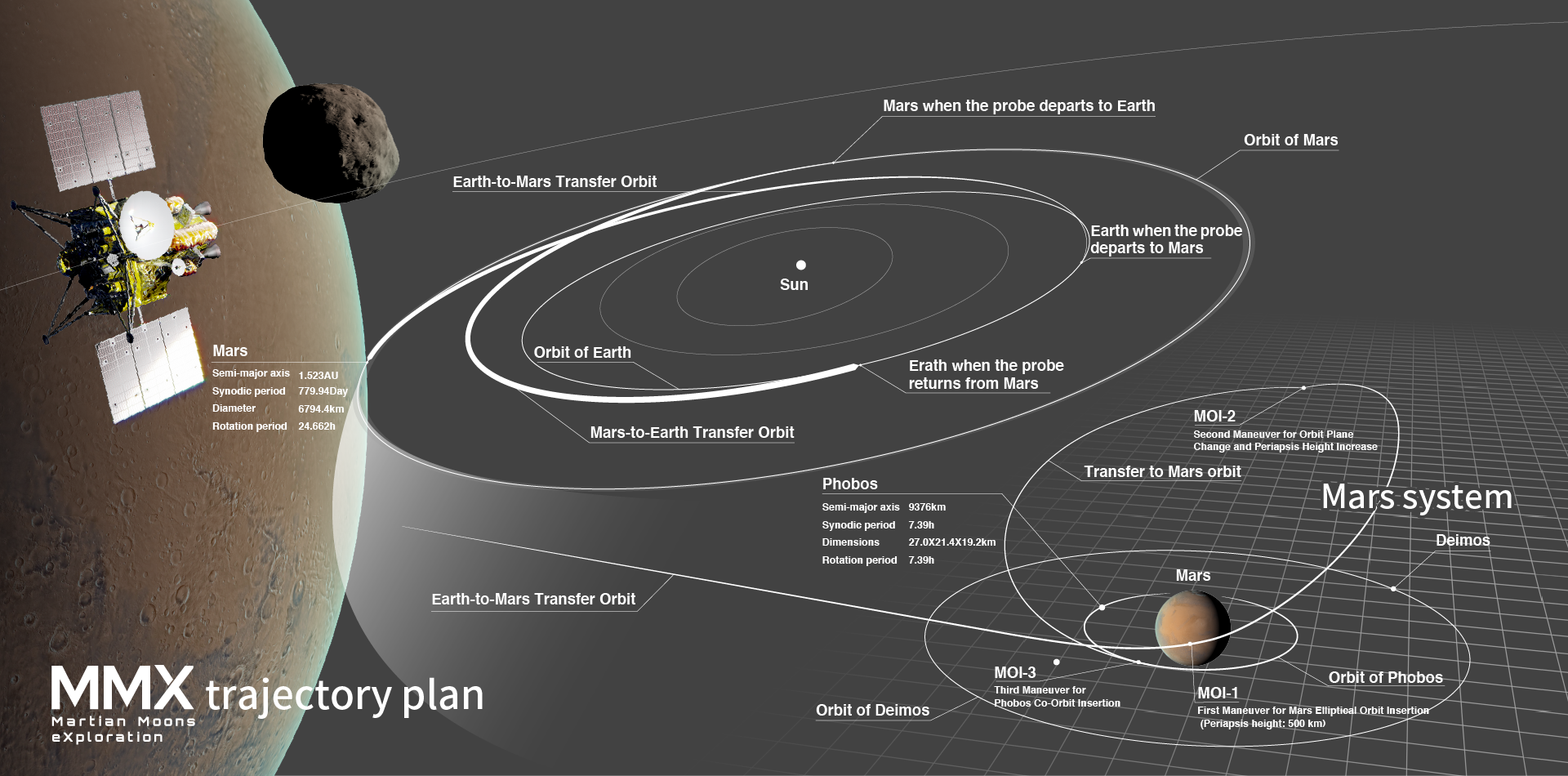
NASA selects NAU researcher for international mission to Martian moons
A planetary scientist at NAU is part of a Japanese Aerospace Exploration Agency (JAXA) mission to travel to Mars and survey the planet’s two moons, including collecting a sample from one and returning it to Earth.
Scientists share ‘comprehensive’ map of volcanoes on Venus — all 85,000 of them
Intrigued by reports of recent volcanic eruptions on Venus? WashU planetary scientists Paul Byrne and Rebecca Hahn want you to use their new map of 85,000 volcanoes on Venus to help locate the next active lava flow.
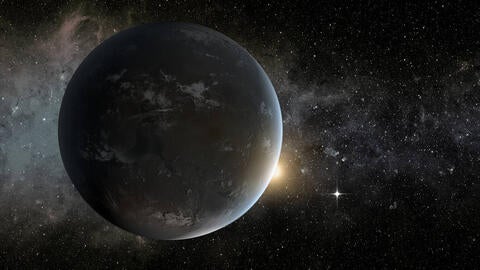
The planet that could end life on Earth
A terrestrial planet hovering between Mars and Jupiter would be able to push Earth out of the solar system and wipe out life on this planet, according to a UC Riverside experiment.
Study quantifies global impact of electricity in dust storms on Mars
Mars is infamous for its intense dust storms, some of which kick up enough dust to be seen by telescopes on Earth. When dust particles rub against each other, they can become electrified. New research shows that this electrical discharge could be the major driving force of Martian chlorine cycle.
Karen Meech Awarded 2023 Dannie Heineman Prize for Astrophysics
The Heineman Foundation, AIP, and AAS are pleased to announce Karen Meech, astronomer at the Institute for Astronomy, University of Hawai’i, as the winner of the 2023 Dannie Heineman Prize for Astrophysics. Meech was selected “for her pioneering work in expanding and pushing boundaries in the field of small body solar system observational science, and for making transformative contributions to shape the broader field of planetary science in general.” She will be awarded $10,000 and a certificate and invited to give a talk at a future AAS meeting.
Experimentalists: Sorry, no oxygen required to make these minerals on Mars
Scientists at Washington University in St. Louis discovered that under Mars-like conditions, manganese oxides can be readily formed without atmospheric oxygen. The study from the laboratory of Jeffrey Catalano in Arts & Sciences was published Dec. 22 in Nature Geoscience.
Scientists get first-ever sound recording of dust devils (tiny tornadoes of dust, grit) on Mars
When the rover Perseverance landed on Mars, it was equipped with the first working microphone on the planet’s surface. Scientists have used it to make the first-ever audio recording of an extraterrestrial whirlwind.
WashU Expert: Artemis launch brings us closer to space exploration goals
Bradley L. Jolliff, the Scott Rudolph Professor of Earth and Planetary Sciences in Arts & Sciences at Washington University in St. Louis and director of the McDonnell Center for the Space Sciences, is available to describe the science and space exploration…
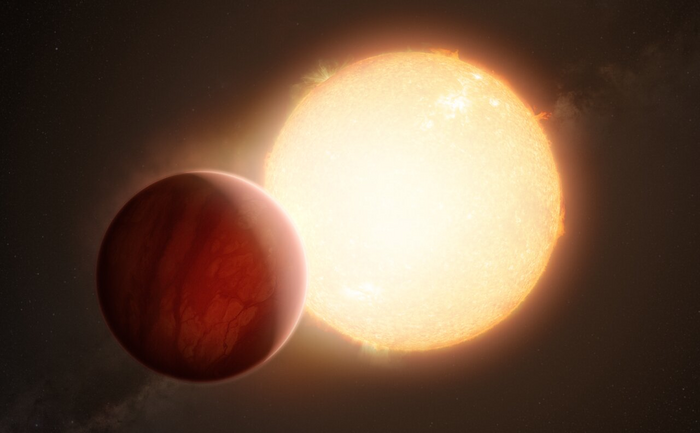
Heaviest element yet detected in an exoplanet atmosphere
Using the European Southern Observatory’s Very Large Telescope (ESO’s VLT), astronomers have discovered the heaviest element ever found in an exoplanet atmosphere — barium.
Secrets from space: Advanced Photon Source helps illuminate the journey of a 4 billion-year-old asteroid
An international collaboration of scientists has published results of their studies into the makeup and history of asteroid 163173 Ryugu. These results tell us more about the formation of our solar system and the history of this nearby neighbor.
The sands of Mars are green as well as red, rover Perseverance discovers
The accepted view of Mars is red rocks and craters as far as the eye can see.
WashU Expert: Artemis launch brings us closer to space exploration goals
On Monday, Aug. 29, NASA plans to launch its Orion spacecraft from the world’s most powerful rocket for a trip around the moon. This launch of the uncrewed Artemis 1 mission is a step toward the goal of landing people…
Department of Energy Announces $8.3 Million for Research on High Energy Density Plasmas
Today, the Department of Energy’s Office of Science (SC) and DOE’s National Nuclear Security Administration (NNSA) announced $8.3 million for 20 research projects in High-Energy Density Laboratory Plasmas (HEDLP).
What a martian meteorite can teach us about Earth’s origins
Astronomy postdoc Valerie Payré is on an international team that discovered the origin of the martian meteorite known as Black Beauty, one of the most-studied meteorites in the world. It may hold clues to the development of Earth and other terrestrial planets and help explain why Earth sustains life when its closest neighbor does not.
New model shows Earth’s deep mantle was drier from the start
By analyzing noble gas isotope data, a scientist determined that the ancient plume mantle had a water concentration that was a factor of 4 to 250 times lower when compared with the water concentration of the upper mantle. The resulting viscosity contrast could have prevented mixing within the mantle, helping to explain certain long-standing mysteries about Earth’s formation and evolution.
A novel crystal structure sheds light on the dynamics of extrasolar planets
Scientists uncover a new crystal structure of a mineral in extrasolar planets using Argonne’s Advanced Photon Source.
Pushing the boundaries of space exploration with X-ray polarimetry
The secrets hiding in the vast expanse of outer space have intrigued humankind for ages.
Scientists find strange black ‘superionic ice’ that could exist inside other planets
Scientists have discovered a way to recreate the ice that exists inside planets like Neptune and Uranus, ice which forms at extremely high temperatures and pressures.
Space odyssey: Argonne scientists among the first to study asteroid fragments
Argonne scientists at the Advanced Photon Source are among the first to study tiny fragments of near-Earth asteroid 162173 Ryugu, collected by a Japanese space mission. These fragments could tell us long-hidden secrets about how our planet and solar system were formed.
Come on in, the water is superionic
Lawrence Livermore National Laboratory (LLNL) scientists have developed a new approach using machine learning to study with unprecedented resolution the phase behaviors of superionic water found in the interiors of Uranus and Neptune.
‘There may not be a conflict after all’ in expanding universe debate
In a new review paper accepted to the Astrophysical Journal, Freedman gives an overview of the most recent observations. Her conclusion: the latest observations are beginning to close the gap. That is, there may not be a conflict after all, and our standard model of the universe does not need to be significantly modified.
Johns Hopkins Scientists Model Saturn’s Interior
New Johns Hopkins University simulations offer an intriguing look into Saturn’s interior, suggesting that a thick layer of helium rain influences the planet’s magnetic field.
Unlocking the secrets of Earth’s early atmosphere
Research partly conducted at the Advanced Photon Source helped scientists discover the composition of Earth’s first atmosphere. What they found raises questions about the origin of life on Earth.
Washington University to develop lunar resource utilization technology for NASA
Power and in-situ resources are two things humans will need as they explore deep space. How future astronauts use these commodities depends on the technology at hand. That’s why NASA is looking to U.S. universities — including Washington University in St. Louis — for lunar-focused research to bring about advancements in in-situ resource utilization and sustainable power solutions.
Rutgers Planetary Scientist, Bioscientist Available for Comment on Perseverance Rover Landing
FOR IMMEDIATE RELEASE Media contact: Neal Buccino, [email protected], 732-668-8439 Scheduled for a Feb. 18 Mars landing, the rover will look for signs of past life New Brunswick, N.J. (Feb. 11, 2021) – Rutgers University-New Brunswick planetary and life scientists are…
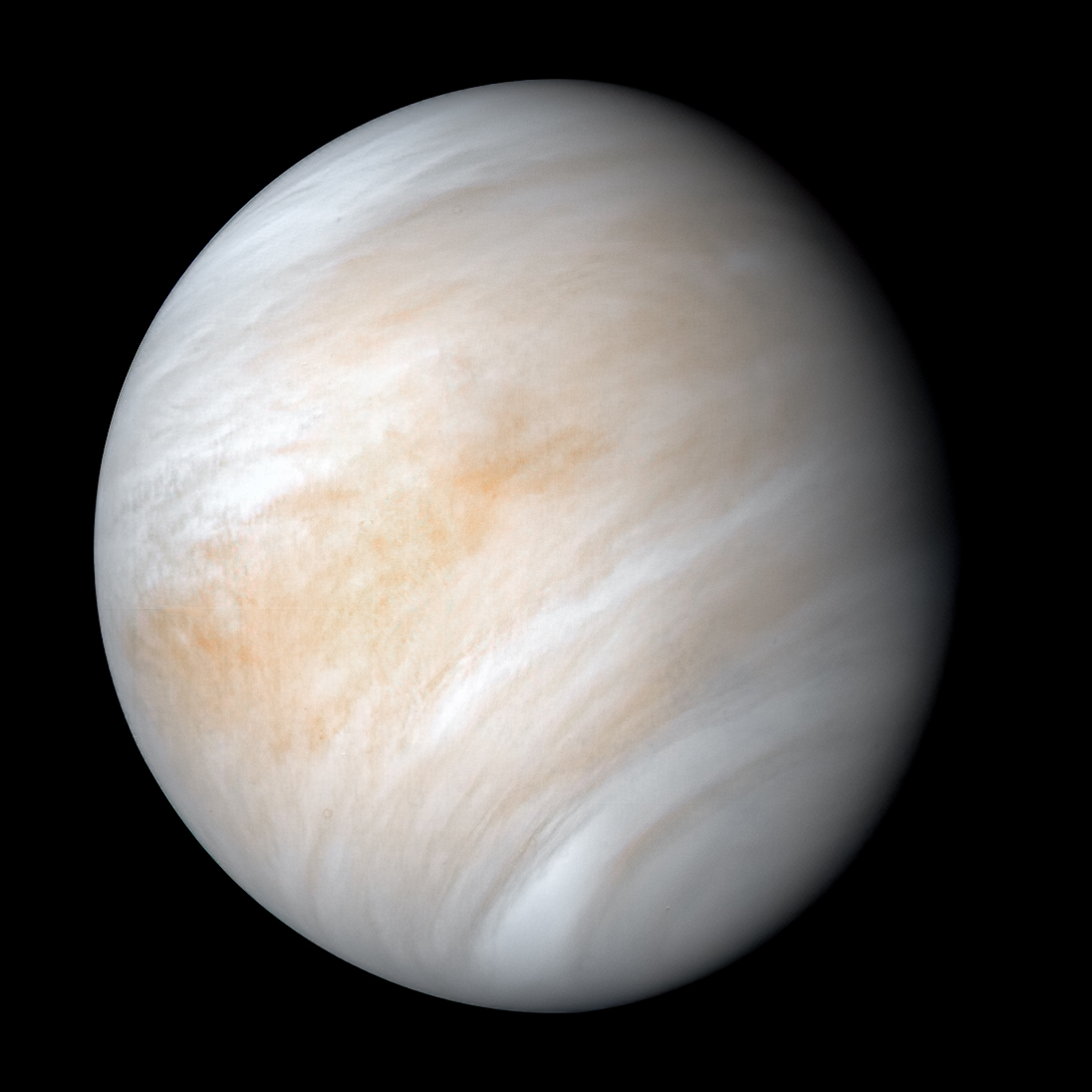
Purported phosphine on Venus more likely to be ordinary sulfur dioxide, new study shows
A University of Washington-led team has revisited and comprehensively reinterpreted radio telescope observations underlying a 2019 claim of phosphine in the atmosphere of Venus. They report that sulfur dioxide, a common gas in the atmosphere of Venus, is likely what was detected instead of phosphine.

Mira’s Last Journey: exploring the dark universe
Scientists used a supercomputer to perform one of the five largest cosmological simulations ever — the Last Journey. This simulation will provide crucial data for sky maps to aid leading cosmological experiments.

WashU Expert: China probe returns with ‘treasure trove’ of moon rocks
The Chinese space agency announced Dec. 16 the return of a lunar probe bringing back the first fresh samples of rock and debris from the moon in more than 40 years. Bradley L. Jolliff, the Scott Rudolph Professor of Earth…
Powerful electrical events quickly alter surface chemistry on Mars and other planetary bodies
Thinking like Earthlings may have caused scientists to overlook the electrochemical effects of Martian dust storms. On Earth, dust particles are viewed mainly in terms of their physical effects, like erosion. But, in exotic locales from Mars to Venus to Jupiter’s icy moon Europa, electrical effects can affect the chemical composition of a planetary body’s surface and atmosphere in a relatively short time, according to research from Washington University in St. Louis.
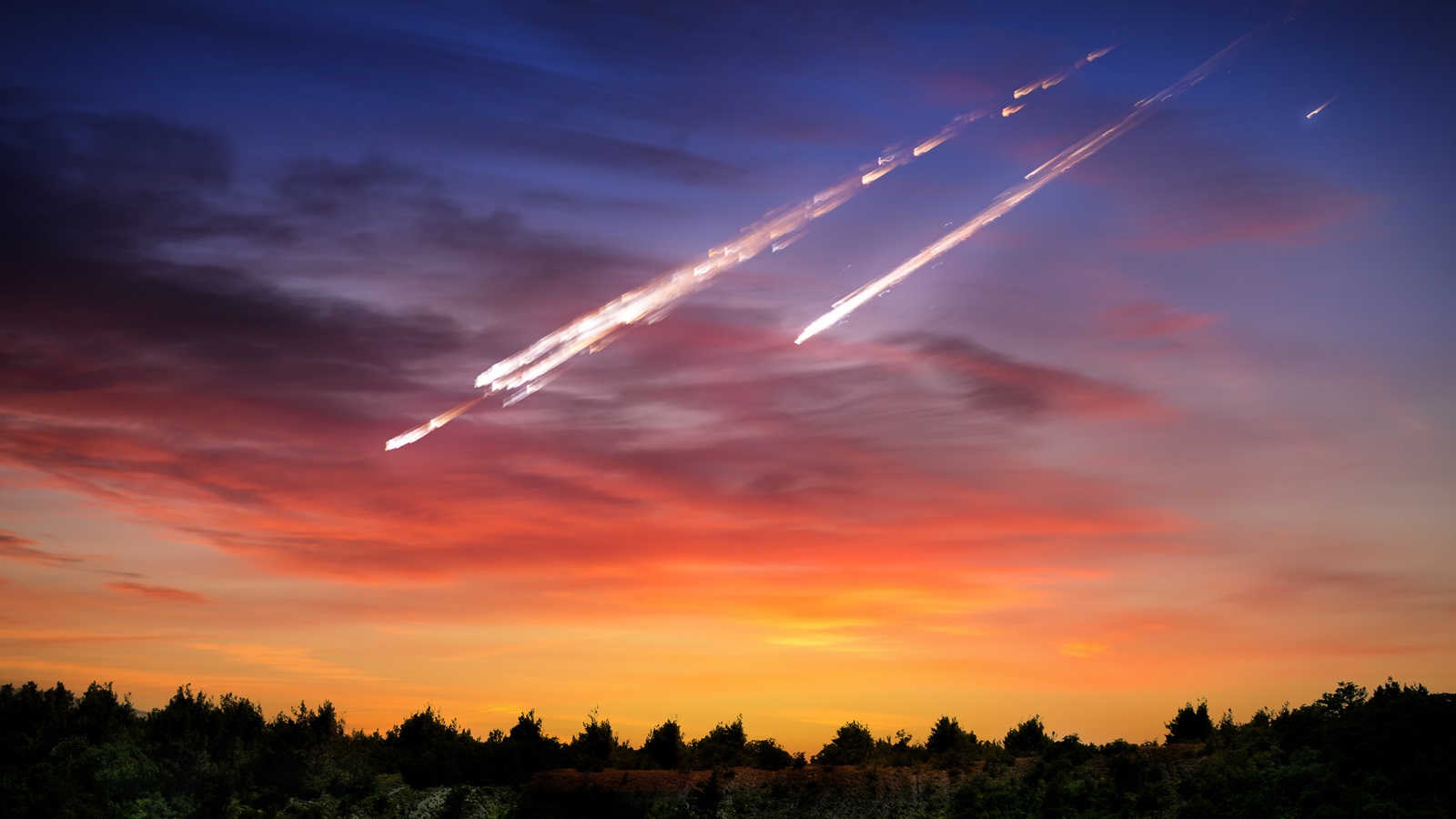
High-impact research: How meteorite strikes may change quartz on the Earth’s surface
Scientists using a unique combination of capabilities at the Advanced Photon Source have learned more about how meteorites affect one of the most abundant materials in the Earth’s crust.

Victoria Orphan: Then and Now
Victoria Orphan is the James Irvine Professor of Environmental Science and Geobiology in the Division of Geological and Planetary Sciences at the California Institute of Technology.
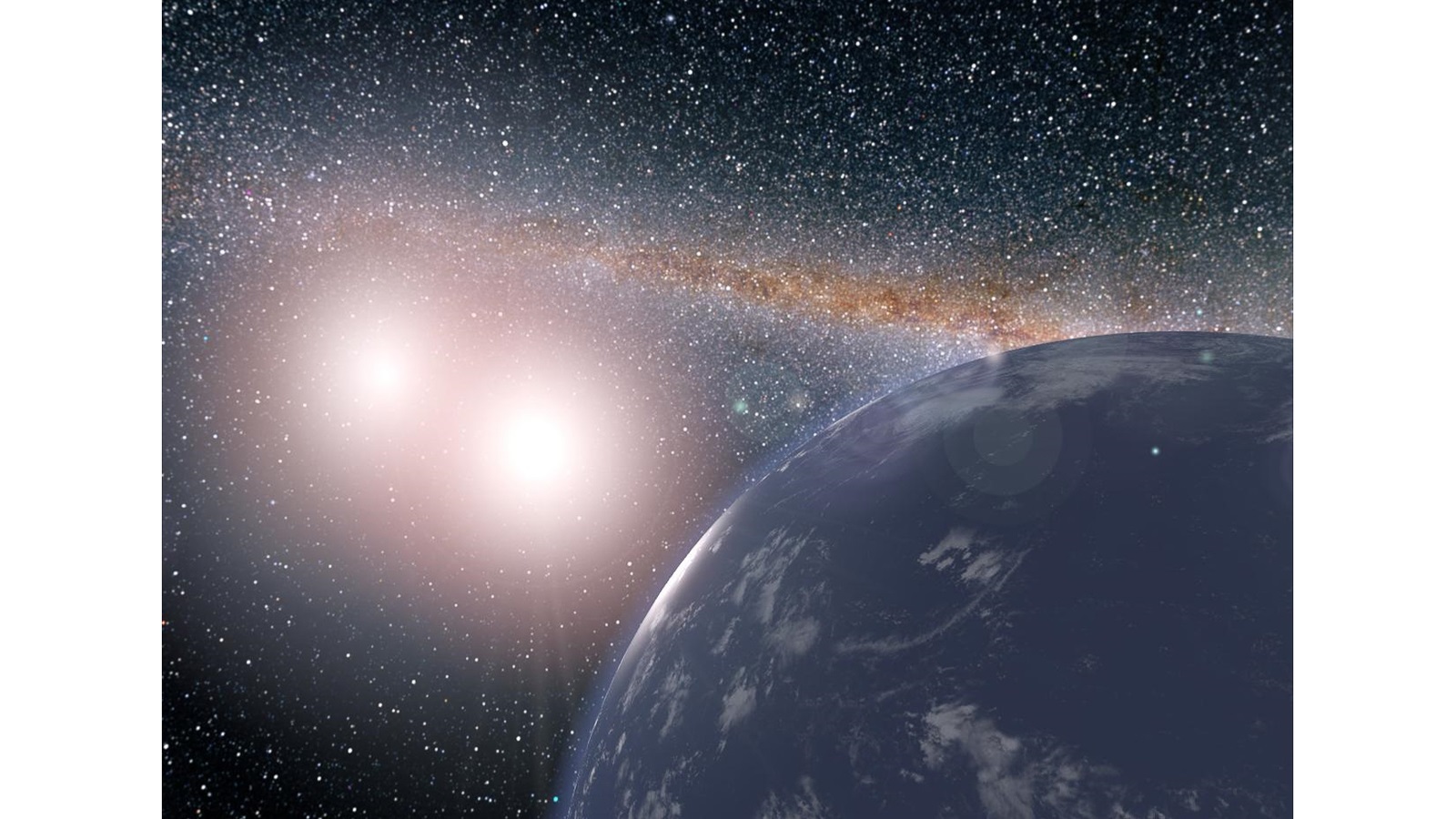
Beneath the surface of our galaxy’s water worlds
Scientists have simulated conditions on water-rich exoplanets to learn more about their geological composition, and found a new transition state between rock and water.
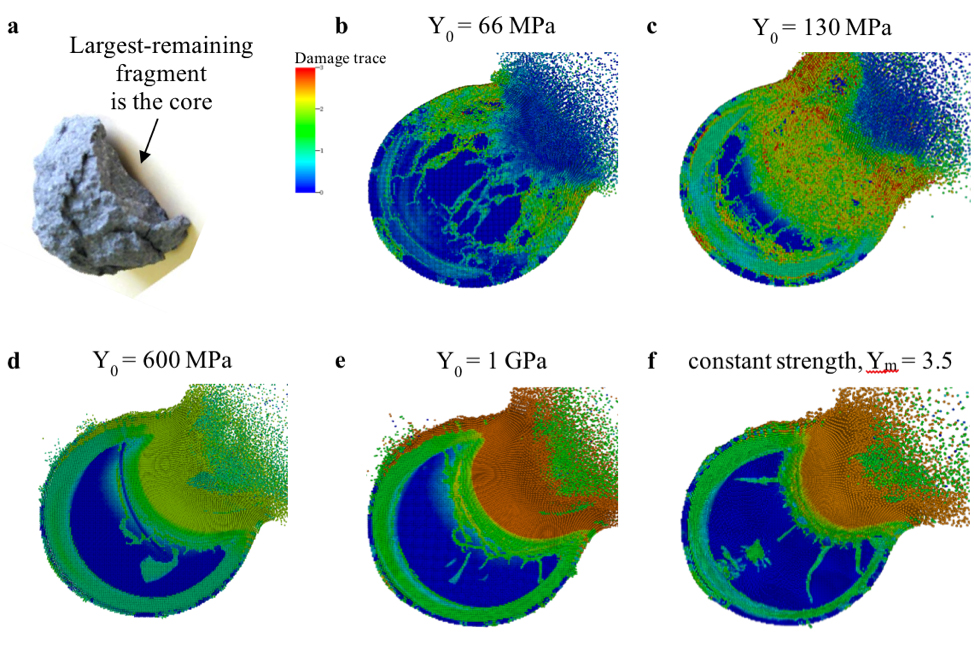
Planetary defenders validate asteroid deflection code
Planetary defense researchers at LLNL continue to validate their ability to accurately simulate how they might deflect an Earth-bound asteroid in a study that will be published in the April issue of the American Geophysical Union journal Earth and Space Science.
Study: Organic molecules discovered by Curiosity Rover consistent with early life on Mars
Organic compounds called thiophenes are found on Earth in coal, crude oil and oddly enough, in white truffles, the mushroom beloved by epicureans and wild pigs.
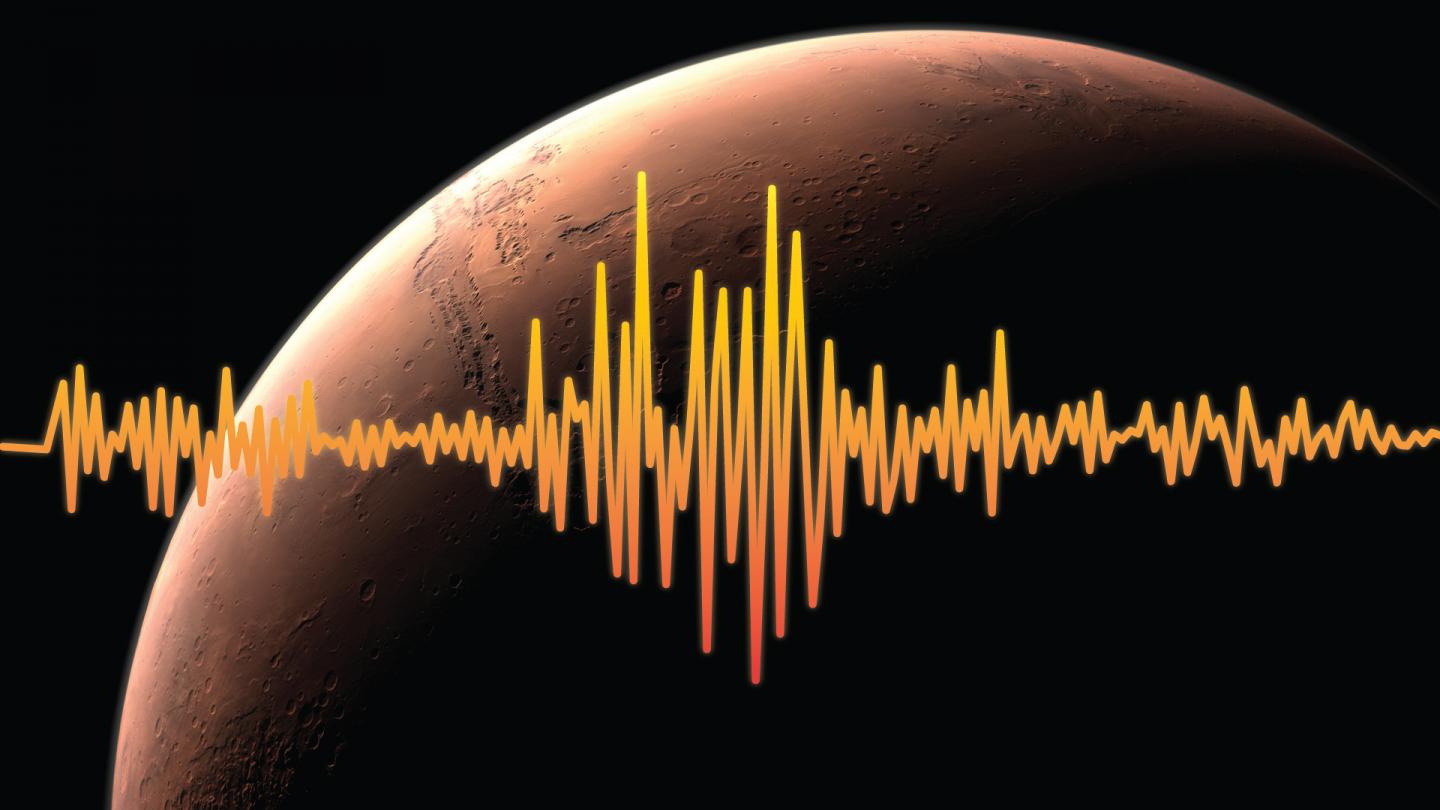
The seismicity of Mars
On 26 November 2018, the NASA InSight lander successfully set down on Mars in the Elysium Planitia region.

Galaxy formation simulated without dark matter
For the first time, researchers from the Universities of Bonn and Strasbourg have simulated the formation of galaxies in a universe without dark matter.
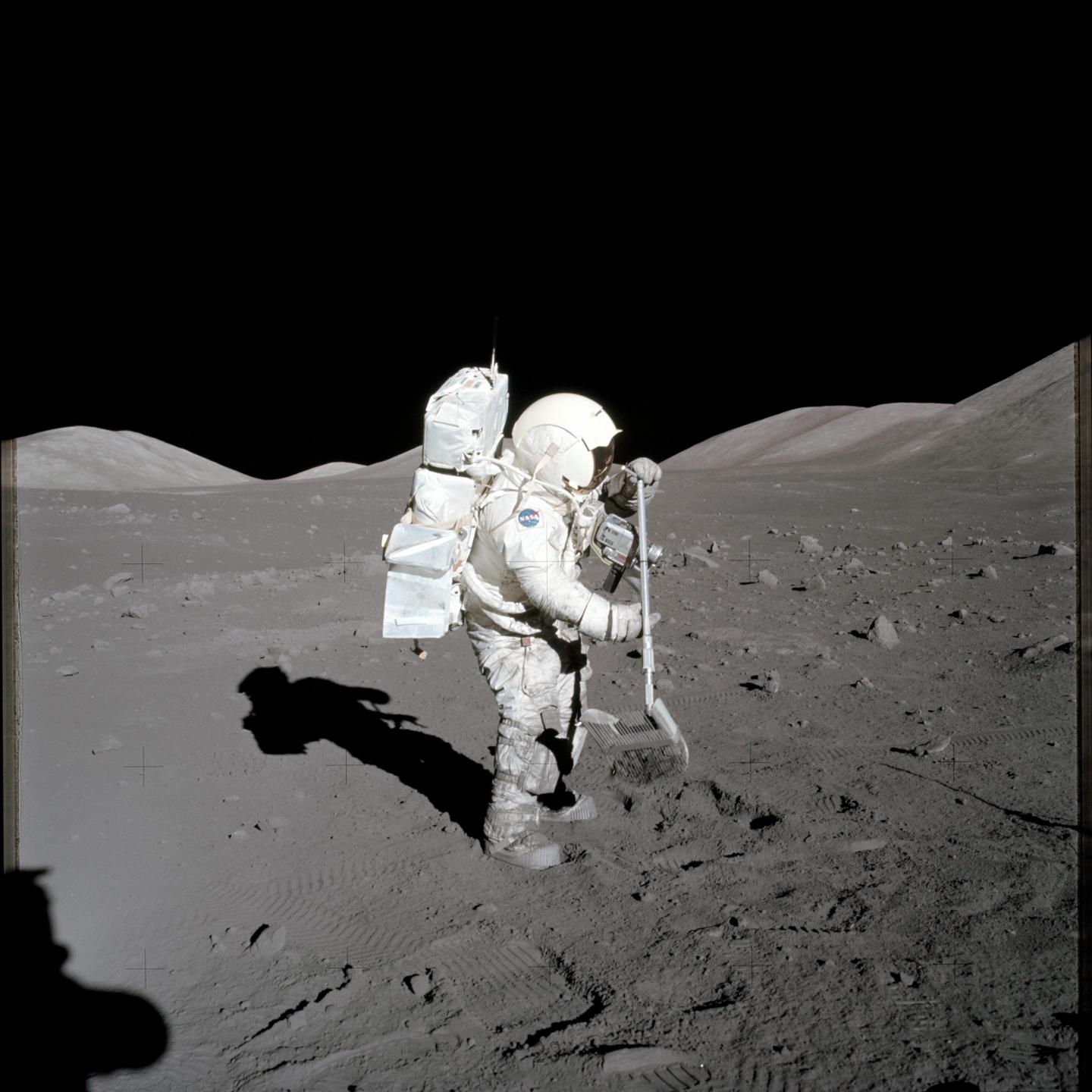
One small grain of moon dust, one giant leap for lunar studies
Back in 1972, NASA sent their last team of astronauts to the Moon in the Apollo 17 mission.
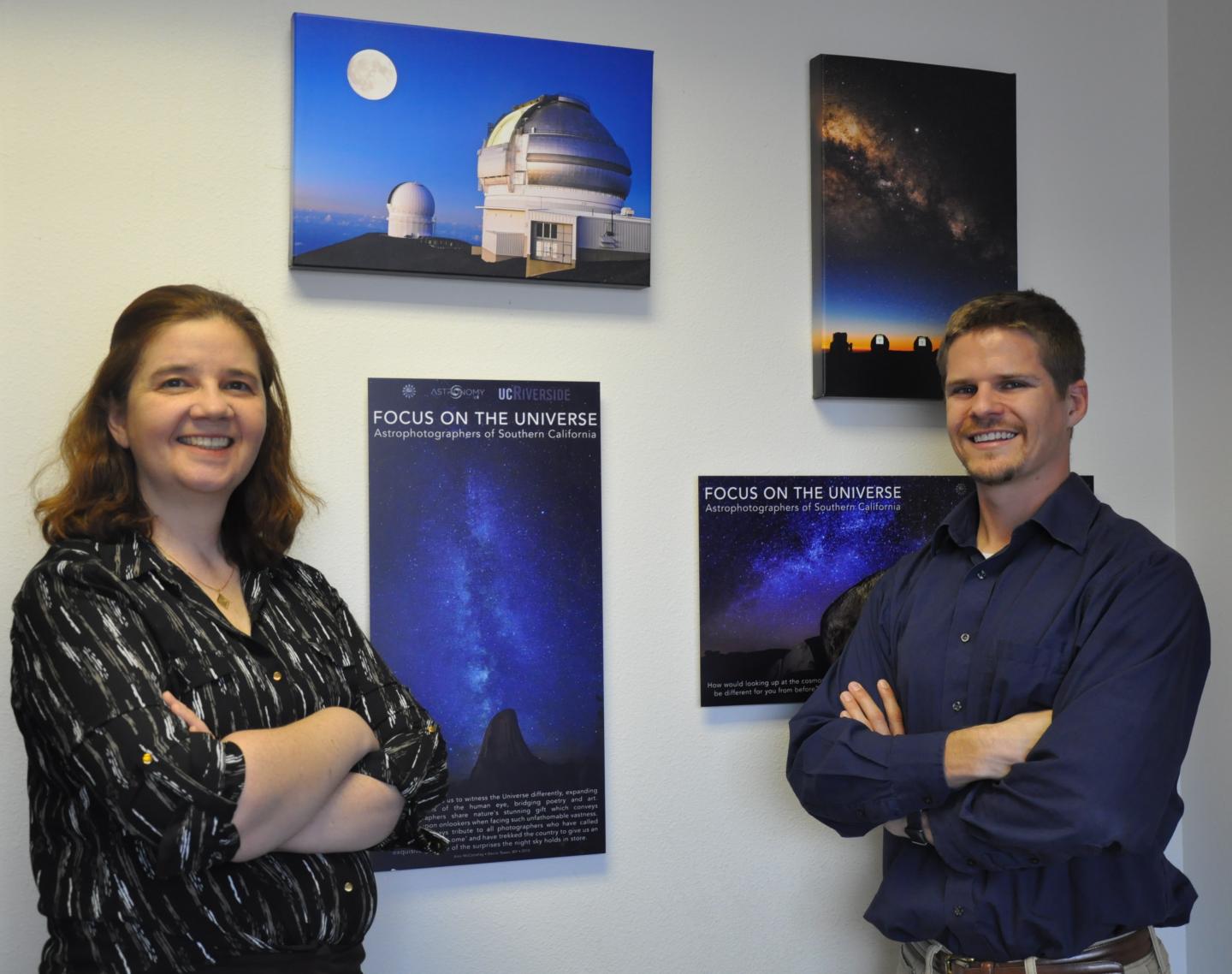
Astronomers discover unusual monster galaxy in the very early universe
An international team of astronomers led by scientists at the University of California, Riverside, has found an unusual monster galaxy that existed about 12 billion years ago, when the universe was only 1.8 billion years old.
The core of massive dying galaxies already formed 1.5 billion years after the Big Bang
Astrophysics, Galaxies: The most distant dying galaxy discovered so far, more massive than our Milky Way — with more than a trillion stars — has revealed that the ‘cores’ of these systems had formed already 1.5 billion years after the Big Bang, about 1 billion years earlier than previous measurements revealed.
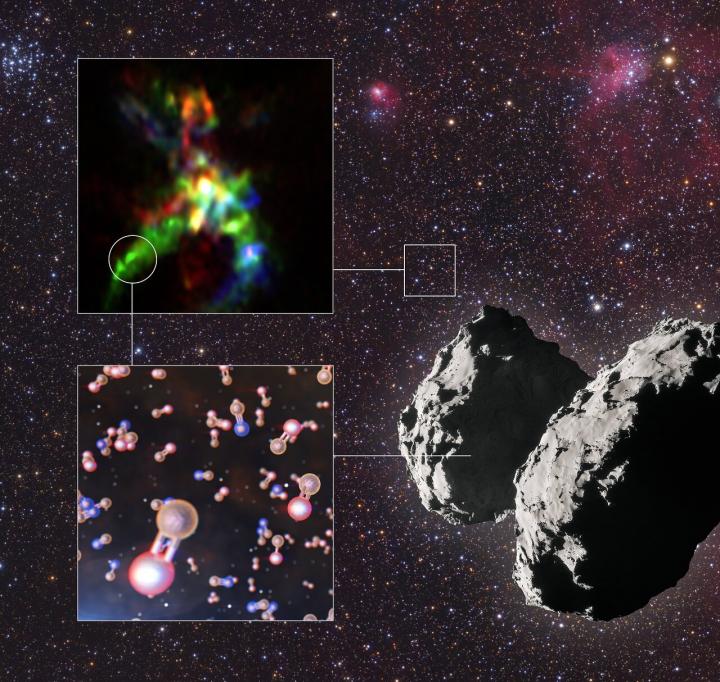
Astronomers reveal interstellar thread of one of life’s building blocks
Phosphorus, present in our DNA and cell membranes, is an essential element for life as we know it. But how it arrived on the early Earth is something of a mystery.

‘Cold Neptune’ and two temperate super-Earths found orbiting nearby stars
Washington, DC– A “cold Neptune” and two potentially habitable worlds are part of a cache of five newly discovered exoplanets and eight exoplanet candidates found orbiting nearby red dwarf stars, which are reported in The Astrophysical Journal Supplement Series by a team led by Carnegie’s Fabo Feng and Paul Butler.

Binary star V Sagittae will explode as a very bright ‘nova’ by century’s end
Currently, the faint star V Sagittae, V Sge, in the constellation Sagitta, is barely visible, even in mid-sized telescopes. However, around the year 2083, this innocent star will explode, becoming as bright as Sirius, the brightest star visible in the night sky.